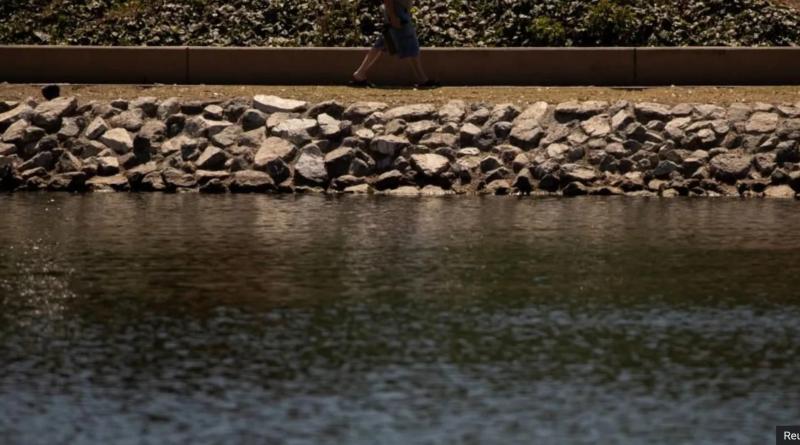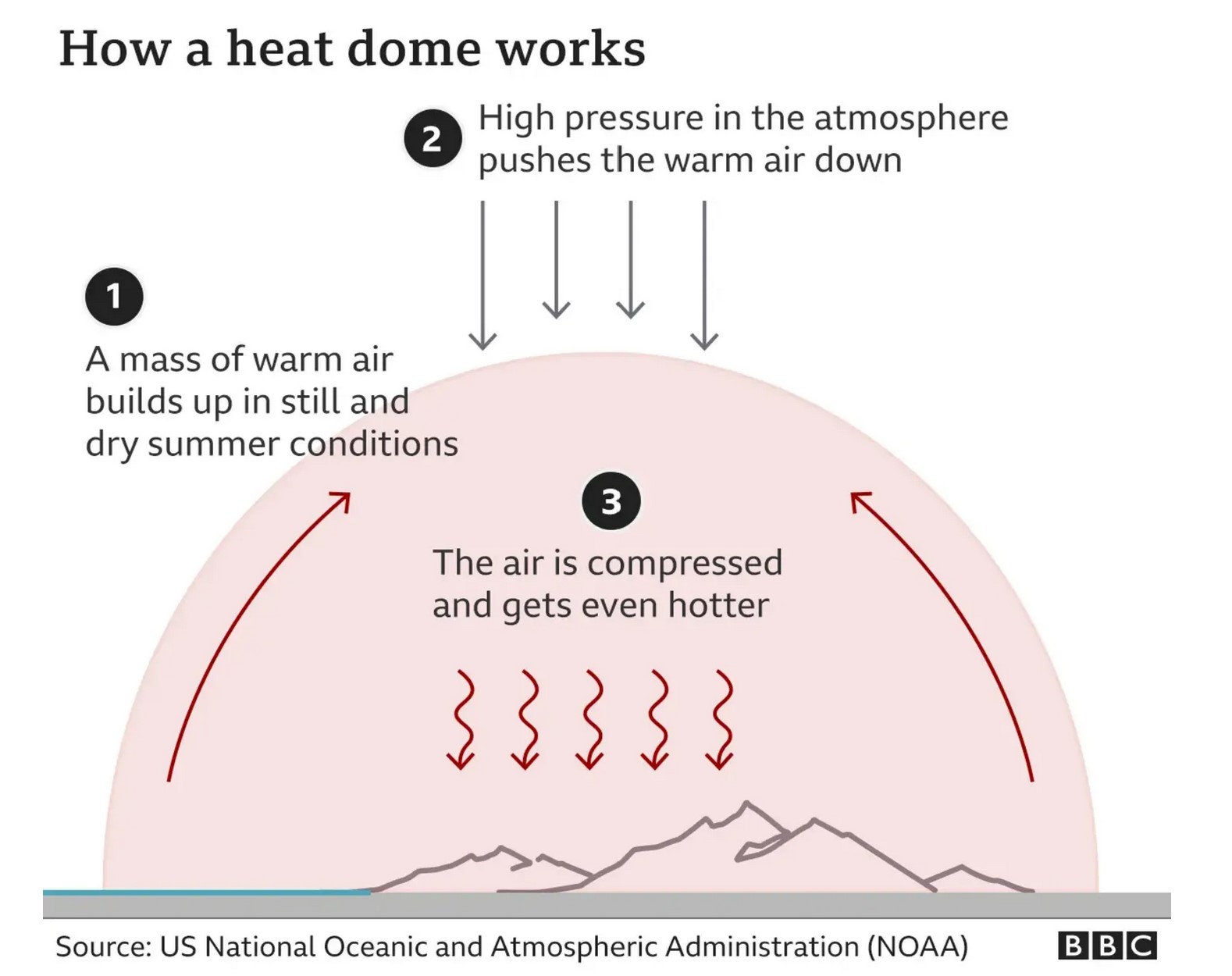Heat dome brings dangerous weather to western US

More than 34 million Americans are preparing for extreme temperatures, as a heat dome descends on the western part of the US this week.
Forecasters are warning residents in California, Nevada, Utah and Arizona to prepare for temperatures to reach around 40C (104F) before Friday.
Later in the week, extreme temperatures are expected to reach parts of the Pacific Northwest.
Similar temperatures last year killed at least a dozen people in the American Southwest. The US Border Patrol in Texas says four migrants attempting to enter the US died over the weekend died due to heat-related illnesses.
What's the latest forecast?
Forecasts show temperatures could reach 42.2C (108F) across a wide swathe of California, from Sacramento to Bakersfield.
Sacramento surpassed 38C (100F) on Tuesday. Last year, California's capital city did not get that hot until the end of June.
On Wednesday that warning will expand further east from Las Vegas to the Lake Havasu City, Arizona, region.
Some areas of south Texas saw temperatures reach 47.2C (117F) Tuesday.
Thursday is expected to be the worst day this week for excessive heat.
Forecasters expect temperatures to be 5.5-11C (10-20F) above normal.
Phoenix, Las Vegas, Albuquerque and Fresno could see previous records for high temperatures squashed.
Residents facing the heatwave have been advised to drink extra fluids, stay inside in air-conditioned rooms out of the sun and wear loose-fitting clothing.
"Heat stroke can be DEADLY," the National Weather Service (NWS) office in Phoenix cautioned in a post on Tuesday evening.
California's Environmental Protection Agency added in an alert that outdoor workers, the elderly and children were particularly vulnerable to extreme heat, which "is an invisible but dangerous consequence of climate change".
Firefighters across the region are also anxiously watching to see if the heat causes any wildfires to break out.
The Corral fire, which broke out on Saturday about 60 miles (95km) east of San Francisco - and briefly threatened a weapons-testing facility - is now mostly contained.
But there is concern the temperatures could cause the fires to flare up again in the coming days.
Residents in the California Bay Area who may have hoped to escape the heat by visiting local beaches have been warned that a north-west ocean swell is expected to bring 15-20ft (4.6-6m) waves to the coast.
Inexperienced swimmers were advised to stay out of the water and beach-goers to be on the lookout for waves that can suddenly pull people into the ocean.
This new heatwave follows last year's sweltering summer, during which Phoenix saw 31 consecutive days of temperatures at 43.3C (110F).
What is a heat dome?
This week's high temperatures are the result of a heat dome.
An area of high pressure pushes air towards the ground, trapping it and causing it to heat up. As a result, temperatures can rise and linger.
The pressure also prevents other weather systems that might cool down an area - such as rain clouds - from forming.
A heat dome that struck the south-western US last July was described by the NWS as "one of the strongest" of its kind to hit the region.
A 2023 June heat dome that struck Louisiana and Texas killed 12 people and sent hundreds to hospital for heat-related health issues.
While heat domes were once described as rare, heatwaves and heat domes are becoming more common and intense because of human-induced climate change, scientists say.






